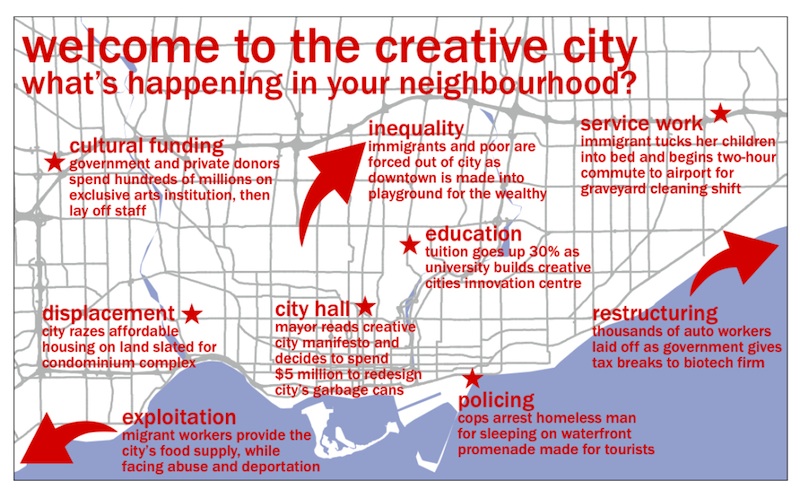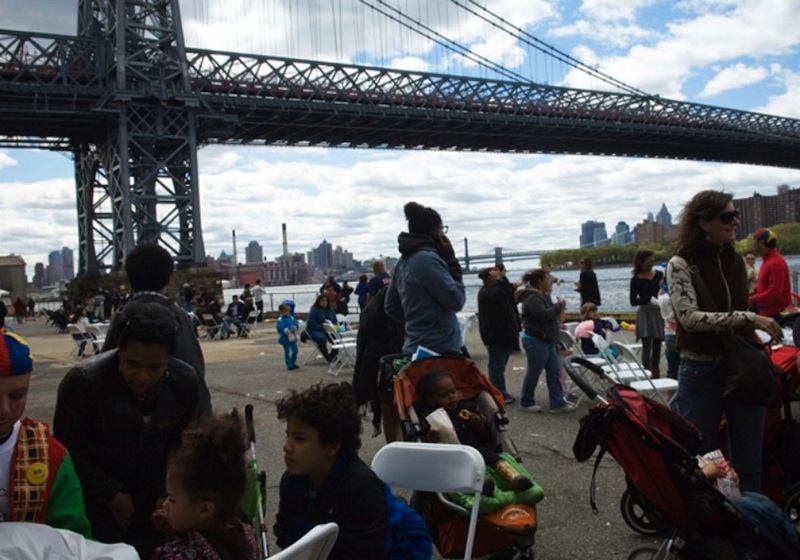Is Anything Learned From the Kotkin-Florida Throw Down?
Now that the dust has apparently settled from the exchange in The Daily Beast (Kotkin’s opening salvo is here and Florida’s response is here) it’s useful to ask what’s been learned. I think the short answer is “not much.” These sorts of confrontations usually generate more heat than light. Both authors have passionate critics and loyal defenders. Robert Steuteville at Better! Cities & Towns rushed to Florida’s defense before the ink on Kotkin’s essay was dry:
Do educated professionals contribute to the economy, to the tax base, to jobs, to the educational system? If the answer is yes, then an influx of the “creative class” does indeed help the entire city and offer some benefit, directly or indirectly, to most of the citizens. How about the amenities that attract the creative class? Are they worth investing in and do they benefit a broad swath of the public? These amenities include: walkability, transit, culture, quality public spaces, historical architecture, high-end jobs, education, connection to nature, and housing in walkable neighborhoods. The answer, again, is yes, yes, yes.
On the other side, Jamaal Green at Sustainable Cities Collective wasn’t going to dignify the exchange by commenting on it. But he couldn’t resist a piece in Rustwire suggesting that the attacks on Florida are “overblown and insidious.” Here’s Green on the “amenities” question and Rustwire’s claim that the interests of the poor and of the “gentrifiers” are aligned more than one might think:
Frankly, this argument is pure neoliberal, trickle-down economics. Thirty years of local, state and federal policies that have favored the interests of economic and political elites have shown us that simply assuming that the success of an elite group will help non-elites is wrong. Amenity-based development, “placemaking” projects, the varied accoutrements of the sustainable city like farmers markets and bike infrastructure, the intense redevelopment of central cities, the conversion of industrial land, and any other array of city or regional policy decisions and priorities are NOT value neutral or apolitical and have a disparate impact on city populations… The way many of these policies have been rolled out in American cities have seeded and exacerbated displacement, gentrification, housing affordability crises, and increased income inequality. To say that the interests of “creatives” and the poor or communities of color are one and the same implies an overlap that in many cities simply does not exist. There are legitimate trade-off decisions and real winners and losers when it comes to policy and planning decisions and we should honestly interrogate the disparate impacts of amenity-based planning strategies instead of effacing the real conflicts and decisions that undergird creative class policy.
A few other quotes from Kotkin’s and Florida’s interlocutors at The Daily Beast capture a bit more of the third party mood and suggest that patience for both men is wearing thin:
“Jasperinboston” goes after Kotkin thusly:
It seems to me Kotkin…has of late become something of a shrill, reverse parody of Florida….Maybe the latter’s claims about the creative class are sometimes exaggerated. But Kotkin writes as if we’ve seen ZERO improvement in the position of America’s cities…Kotkin seems to blend his often insightful observations with large-ish dollops of hippie-punching and resentment, and an overemphasis on the hipster phenomenon. But not everybody who trades in suburban living for life in an urban core does so in order to party with long-sideburned PBR drinkers. Clearly the amenities and lower crime available in many of today’s cities are highly appealing. And then there’s simply the shorter commutes for those lucky enough to walk to work… I mean, for all the growth in jobs found in suburban office parks, the urban cores of America’s cities are still home to vast numbers of (often very high-paying) jobs in areas like banking/finance, business services, government, publishing, architecture/design, academia, medicine/medical research, tourism hospitality, etc. Simply living near one’s job is, again, appealing to many people. Also, by all accounts much of the boom in urban living is driven by empty nesters — so it’s not just young, in-their-prime knowledge workers who are driving the phenomenon. Anyway, at the end of the day perception drives reality, and indeed becomes reality. And increasingly for better or worse the perception influencing the decisions of consumers, businesses and elected officials is that city life is desirable, and advantageous. I think Kotkin’s fighting a losing battle.
“QueensArt” offers this about Florida:
New York, especially creative class poster child Brooklyn, is hemorrhaging economic and racial diversity. The fact is that regardless of professed political beliefs, the effect of the so-called creative class is to make a place whiter and richer. It’s gentrification with city resources accelerating the exile of whole segments of its citizens, in favor of attracting upper class settlers. Without cities enacting policies that balance the needs of the wealthy with the working and middle classes, creative class policies are nothing more than an act of contempt of a city against its own people. In the end, this will historically be viewed as destructive on the same level as red-lining and Robert Moses.
Michael E. Smith goes after both of them and suggests that maybe these aren’t the guys we should be listening to:
It is interesting that Richard Florida chooses to counter Joel Kotkin by personal attacks and critiques of things that were not part of Kotkin’s article. And he ignores the critiques of his creative class theory by urban scholars (e.g. Jamie Peck) cited by Kotkin. On the other hand, Kotkin ignores many aspects of Florida’s argument. But then these two are cultural entrepreneurs and not scholars, and they make their points in popular books and internet journalism, not peer-reviewed scholarly papers. I’d be more interested to hear what Edward Glaeser and other scholars of contemporary urbanism have to say about the views of both writers.
“Barabbas” is even more pointed:
Joel Kotkin and Richard Florida are both irrelevant. Kotkin’s little fetish for suburban sprawl and nuclear families is an obviously failed experiment if households have to commute. It’s amazing that Kotkin can’t figure that out while he resides in the North Hollywood area. But cities are also a relic of the industrial past. Whatever economy of scale can be achieved with urban density is quickly erased by housing scarcity issues. Why do cities need to cluster population anyway?…The effects of the digital revolution are unclear beyond the fact that it has rendered many traditional occupations obsolete as well as the necessity of clustering population in cities. It would be more interesting, though less profitable, to prophecy the emergence of resource-based organic communities throughout these magnificent United States of America. We have the technology and we have the indomitable spirit of the American people. The genius of America is the cultivation of genius. Kotkin and Florida are shills. The painful residue of the intellectual class rendered irrelevant by technological innovation. The demise of capitalism from within, exactly as Schumpeter predicted…
These, as well as the many dozens of snarkier comments on both sides, suggest that there’s little more to this “debate” than entertainment value. At the end of his essay—and perhaps to his credit—Florida seeks to re-direct the conversation:
Enough already with this tired and divisive debate about families versus hipsters, cities versus suburbs. We know that cities and skills power growth and we know that we’re facing real divides and real inequalities. Let’s get on with the critical task of drafting the new social compact that our urban age requires. Now that’s a debate worth having.
Agreed. Florida’s proposed new social or creative compact is wide-ranging and has its virtues. But other urbanists whose work I’ve highlighted on this blog—Jamaal Green, Richey Piiparinen, Neeraj Mehta—are doing much more to advance the placemaking conversation. Aaron Renn and Susie Cagle ain’t bad either. Theirs are the voices most worth listening to.




Leave a Reply